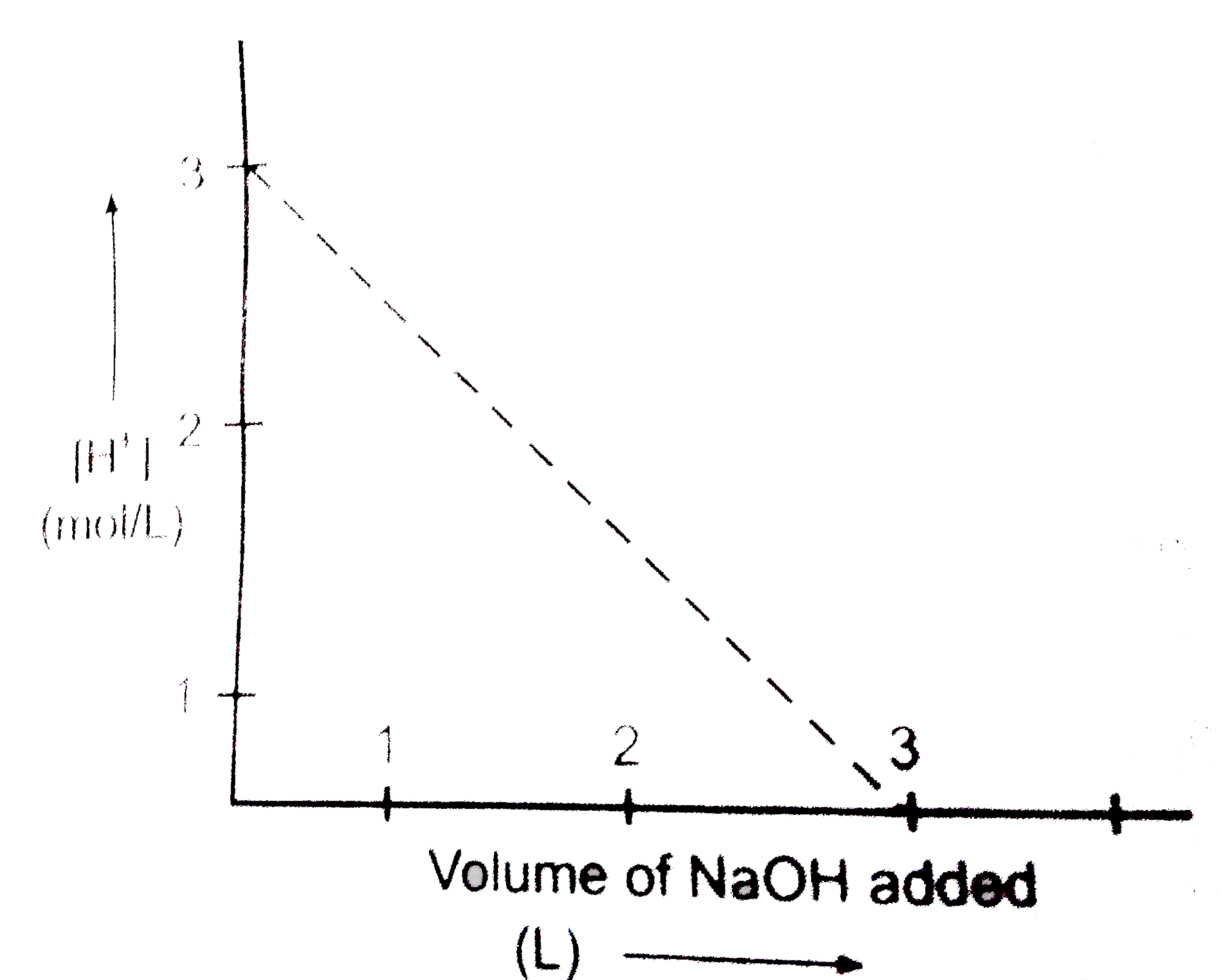A sample of magnisium metal containing some MgO as impurity was dissolved in 125 " mL of " 0.1 N H2SO4. The volume of H2 evolved at 27.3∘C and 1 atm was 120.1 mL. Resulting solution was found to be 0.02 N with respect to H2SO4. Calculate (i) the weight of sample dissolved and (ii) the percentage by weight of Mg in the sample. Neglect any change in the volume of the solution (atomic weight of Mg=24.3).
To solve the problem step by step, we will follow the outlined procedure based on the information provided in the question.
Step 1: Convert the volume of hydrogen gas (H₂) evolved at the given conditions to STP (Standard Temperature and Pressure).
The volume of H₂ evolved is given as 120.1 mL at 27.3°C and 1 atm. We need to convert this volume to STP conditions (0°C or 273 K and 1 atm).
Using the formula:
VSTP=Vgiven×TSTPTgiven
Where:
- Vgiven=120.1mL
- TSTP=273K
- Tgiven=27.3+273=300.3K
Calculating:
VSTP=120.1mL×273300.3≈109.2mL
Step 2: Calculate the moles of H₂ produced.
At STP, 1 mole of gas occupies 22.4 L (or 22400 mL). Therefore, the moles of H₂ produced can be calculated as follows:
Moles of H2=VSTP22400=109.222400≈0.00487moles
Step 3: Relate moles of H₂ to moles of Mg.
From the reaction:
Mg+H2SO4→MgSO4+H2
1 mole of Mg produces 1 mole of H₂. Therefore, the moles of Mg that reacted is also 0.00487moles.
Step 4: Calculate the weight of Mg.
Using the atomic weight of Mg (24.3 g/mol):
Weight of Mg=Moles of Mg×Atomic Weight of Mg=0.00487×24.3≈0.1185grams
Step 5: Calculate the total equivalents of H₂SO₄ used.
The normality of the H₂SO₄ solution is given as 0.1 N and the volume is 125 mL. The total equivalents of H₂SO₄ initially present can be calculated as:
Equivalents of H2SO4=Normality×Volume (L)=0.1×1251000=0.0125equivalents
Step 6: Calculate the equivalents of H₂SO₄ remaining in the solution.
The resulting solution was found to be 0.02 N. Therefore, the equivalents of H₂SO₄ remaining can be calculated as:
Equivalents remaining=0.02×198.251000=0.0025equivalents
Step 7: Calculate the equivalents of H₂SO₄ used.
Equivalents used=Initial equivalents−Equivalents remaining=0.0125−0.0025=0.01equivalents
Step 8: Relate the equivalents of Mg and MgO to the equivalents of H₂SO₄ used.
Let EMg be the equivalents of Mg and EMgO be the equivalents of MgO. We have:
EMg+EMgO=0.01
Step 9: Calculate the equivalents of MgO.
Using the equivalent weight of Mg (12.15 g/equiv):
EMg=0.118512.15≈0.00975equivalents
Substituting back:
EMgO=0.01−0.00975=0.00025equivalents
Step 10: Calculate the weight of MgO.
Using the molecular weight of MgO (40.3 g/mol) and its n-factor (2):
Weight of MgO=EMgO×Equivalent Weight of MgO=0.00025×40.32≈0.005grams
Step 11: Calculate the total weight of the sample.
Total weight=Weight of Mg+Weight of MgO=0.1185+0.005≈0.1235grams
Step 12: Calculate the percentage by weight of Mg in the sample.
Percentage of Mg=(Weight of MgTotal weight)×100=(0.11850.1235)×100≈95.95%
Final Answers:
(i) The weight of the sample dissolved is approximately 0.1235 grams.
(ii) The percentage by weight of Mg in the sample is approximately 95.95%.
VSTP=Vgiven×TSTPTgiven
Where:
- Vgiven=120.1mL
- TSTP=273K
- Tgiven=27.3+273=300.3K
VSTP=120.1mL×273300.3≈109.2mL
Moles of H2=VSTP22400=109.222400≈0.00487moles
Mg+H2SO4→MgSO4+H2
1 mole of Mg produces 1 mole of H₂. Therefore, the moles of Mg that reacted is also 0.00487moles.
Weight of Mg=Moles of Mg×Atomic Weight of Mg=0.00487×24.3≈0.1185grams
Equivalents of H2SO4=Normality×Volume (L)=0.1×1251000=0.0125equivalents
Equivalents remaining=0.02×198.251000=0.0025equivalents
EMg+EMgO=0.01
EMg=0.118512.15≈0.00975equivalents
EMgO=0.01−0.00975=0.00025equivalents
Weight of MgO=EMgO×Equivalent Weight of MgO=0.00025×40.32≈0.005grams
(i) The weight of the sample dissolved is approximately 0.1235 grams.
(ii) The percentage by weight of Mg in the sample is approximately 95.95%.
Topper's Solved these Questions
- STOICHIOMETRYBOOK - CENGAGE CHEMISTRY ENGLISHCHAPTER - STOICHIOMETRYEXERCISE - Ex 3.1
3 Videos
- STOICHIOMETRYBOOK - CENGAGE CHEMISTRY ENGLISHCHAPTER - STOICHIOMETRYEXERCISE - Ex 3.2
3 Videos
- STATES OF MATTERBOOK - CENGAGE CHEMISTRY ENGLISHCHAPTER - STATES OF MATTEREXERCISE - Exercises (Ture False)
25 Videos
- THERMODYNAMICSBOOK - CENGAGE CHEMISTRY ENGLISHCHAPTER - THERMODYNAMICSEXERCISE - Archives (Subjective)
23 Videos
Similar Questions
The weight of solute present in 200mL of 0.1MH2SO4:
View SolutionIf 100mL of 0.6NH2SO4 and 200mL of 0.3NHCl are mixed together, the normality of the resulting solution will be
View Solution5g sample contain only Na2CO3andNa2SO4. This sample is dissolved and the volume made up to 250mL.25mL of this solution neutralizes 20mL of 0.1MH2SO4. Calculate the percent of Na2SO4 in the sample.
View Solution20 ml of 0.4 MH2SO4 , and 80 ml of 0.2 M NaOH are mixed. Then the pH of the resulting solution is
View Solution1 M NaOH solution was slowly added in to 1000 mL of 183.75 g impure H2SO4 solution and the following plot was obtained. The percentage purity of H2SO4 sample and slope of the curve respectively are:

View SolutionA sample of Na2CO3H2O weighing 0.62 g is added to 100 mL of 0.1 N H2SO4. Will the resulting solution be acidic, basic or neutral ?
View Solution100ml of 0.2MH2SO4 is added to 100ml of 0.2MNaOH. The resulting solution will be
View SolutionA sample of sodium carbonate contains impurity of sodium sulphate. 1.25 g of this sample are dissolved in water and volume made up to 250 mL. 25 mL of this solution neutralise 20 mL of N10 sulphuric acid.
Calculate the percentage of sodium carbonate in the sample.
View SolutionA sample of Na2CO3.H2O weighing 0.62 g is added to 10 ml of 0.1NH2SO4 solution . The resulting solution will be
View Solution0.2 g if a sample of H2O2 required 10 ml of 1 N KMnO4 for titration in acidic medium. The percentage purity of H2O2 sample is:
View Solution
